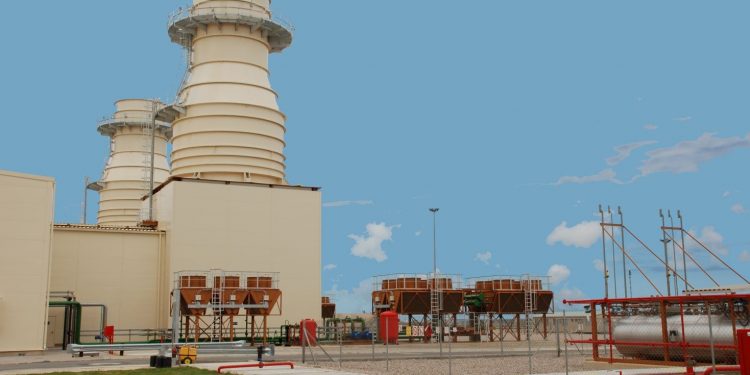Wednesday, 5 November 2025: Eskom notes with concern the continued misinformation regarding its system performance and diesel usage despite its consistent efforts to share transparent, data-based operational updates that are published every Friday on its media page.
Sustained improvements in generation performance
Eskom’s latest Power Alert (31 October 2025) highlights continued improvements in generation performance—including a steady reduction in diesel usage, enhanced power station efficiency, and a decrease in breakdowns.
Eskom has previously stated that the Energy Availability Factor (EAF) target of 70% by 31 March 2025 was not met due to the deliberate increase in planned maintenance of its generation fleet. This strategy was implemented to improve the long-term reliability of generating units and ensure compliance with regulatory and licensing requirements. These maintenance efforts are now yielding tangible results, reflected in improved system performance, ensuring the uninterrupted electricity supply that South Africans are currently experiencing.
Since August 2025, Eskom’s EAF has either reached or exceeded 70% on 32 occasions, with the average EAF for the September month sitting at 70.27%. This demonstrates the continued success of the Generation Recovery Plan, currently underway since March 2023.
Year-to-date, the EAF stands at 63.19%, marking a 7.16% improvement from 56.03% in the FY2023. At the same time, breakdowns (Unplanned Capacity Loss Factor) have decreased by 6.76%, from 31.92% (~15GW) to 25.16% (~11.8GW). This reduction—equivalent to roughly three stages of loadshedding or almost the capacity of Lethabo Power Station, represents a significant improvement in the reliability and stability of Eskom’s generation fleet.
Reduced reliance on diesel reflecting improved system resilience
Eskom continues to utilise diesel strategically and prudently, with Open-Cycle Gas Turbines (OCGTs) forming an integral part of the generation fleet — designed to be used during peak demand periods to maintain system stability and ensure consistent supply. This reflects a sustained reduction in reliance on diesel-fired generation.
The year-to-date OCGT load factor stands at 5.84%, demonstrating that these units are being used selectively and efficiently, as intended. The load factor measures how intensively OCGTs are operated relative to their available capacity — and a lower value indicates greater stability within the baseload generation fleet and reduced dependence on emergency generation.
In this financial year, Eskom’s Power Alerts issued in April indicated that OCGT usage was the highest during this period (April 2025). This was mainly due to delays in returning several generating units from planned maintenance, as previously communicated. Since then, diesel usage has steadily decreased, consistent with Eskom’s strategy to rely less on OCGTs and strengthen the performance of its baseload generation fleet.
These operational improvements have also enabled Eskom to place 13 generating units on cold reserve as of 31 October 2025, signalling restored generation capacity, improved reliability, and enhanced system resilience.
Context on diesel usage
Between FY2021, FY2022, and FY2023 — a period shaped by COVID-19 lockdowns in FY2021 and severe generation constraints in FY2023, South Africa experienced 47, 65, and 280 days of loadshedding, respectively. FY2024 had 329 days of loadshedding. Since then, Eskom has made significant progress:
- In FY2025, the utility recorded 352 days without loadshedding, including a loadshedding-free winter — a marked improvement from just 36 days in FY2024. This means Eskom met electricity demand 96% of the time in FY2025, compared to only 9% in FY2024.
- In FY2026 to date, Eskom has achieved 213 days without loadshedding, meeting electricity demand 98% of the time, with only 26 hours of interruptions recorded between April and May 2025.
The table and graph below (Table 1 and Figure 1) demonstrate that diesel (OCGT) usage rose steadily between FY2021 and FY2024, consistently surpassing budgeted projections. From FY2025, however, usage declined sharply — by around R16 billion compared to FY2024 and dropping below budget levels. According to Eskom’s Power Alerts, diesel consumption in FY2026 has continued to decrease, with the load factor reducing from 16.02% in April 2025 to 8.28% in May as additional generating units returned to service, and further down to 0.75% in October 2025. Diesel usage during September and October 2025 was also notably lower than the same period in the previous year, remained under budget and is projected to remain under budget by year end.
| Financial Year | Diesel Budget (R’million) | Actual Diesel Spend/Cost (R’million) |
| FY2019 | R1 024 | R6 206 |
| FY 2020 | R10 782 | R8 630 |
| FY 2021 | R1 939 | R8 275 |
| FY 2022 | R1 556 | R12 710 |
| FY 2023 | R14 012 | R29 243 |
| FY 2024 | R27 921 | R33 357 |
| FY 2025 | R21 800 | R17 048 |
| FY 2026 (YTD) | R8 053 | R6 074 |
Table 1. Diesel Cost vs Budget

This demonstrates Eskom’s strategic shift away from diesel reliance, driven by stronger 24/7 baseload generation.
Commitment to transparency and responsible reporting
Eskom remains committed to transparency, providing South Africans with accurate and timely information. Improvements in generation performance, a significant reduction in diesel usage, and the effective execution of the Generation Recovery Plan have strengthened the stability of the national grid. Notably, Eskom recorded a profit in FY2025, reflecting operational efficiencies and sound financial management.
With the power system now stable and energy security strengthened, Eskom is turning its focus to rolling out the load reduction programme to address localised challenges and improve supply reliability in specific areas. The utility urges media to report responsibly, ensuring South Africans receive a balanced and accurate view of the progress made.
ENDS
*fuel cost only, excludes diesel rebates for Eskom OCGTs














